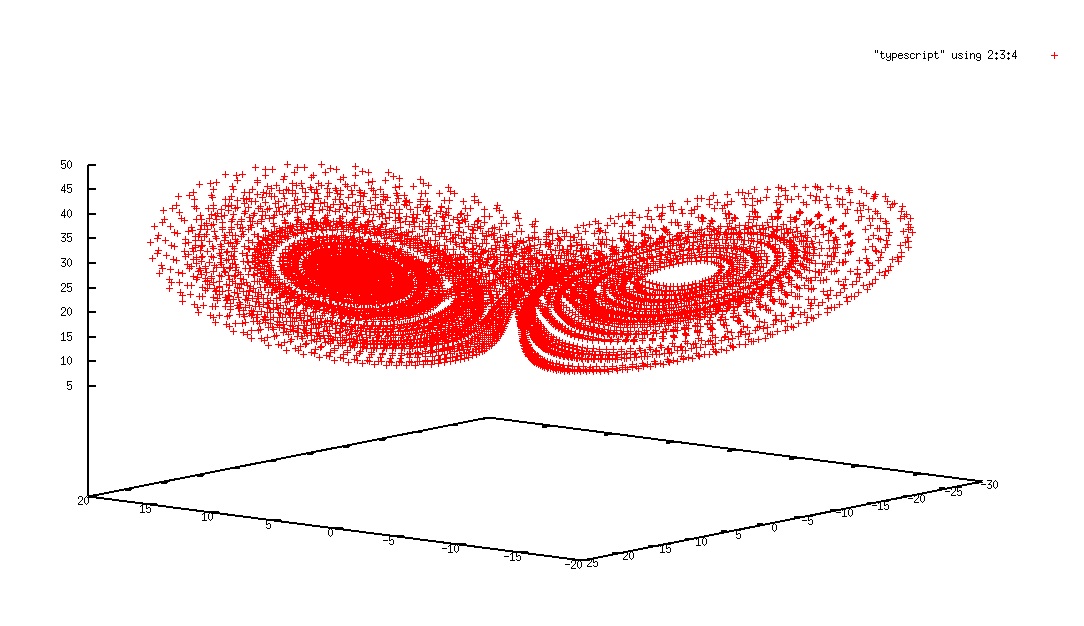CS382:Chaos
Contents
Climate Model
This unit is about chaotic system. Chaotic system typically appear in climate model.
- A little bit more about what chaotic systems are would be nice here.
A famous chaotic theory was found from the research of climate model. It could be worthy to introduce how Edward Lorenz found deterministic climate model cannot predict future climate because of the initial parameters.
LAB activity is Lorenz attractor, named for Lorenz. It is a 3-dimensional structure corresponding to the long-term behavior of a chaotic flow. The map shows how the state of a dynamical system (the three variables of a three-dimensional system) evolves over time in a complex, non-repeating pattern.
This unit will be an issue about the upper limit of computational model.
- Not sure I understand what you mean by this.
Background Reading
- Making Order Out of Chaos: Edward Lorenz
- Edward N. Lorenz "Deterministic Nonperiodic Flow"
- Do we actually have the article and not just the abstract? I think this reading is probably going to be too far over the heads of the freshmen.
- Deterministic Nonperiodic Flow (1963)
- Interesting, but this is going to need more information on how to explain this to the students and how to fit this into the unit.
- James Gleick "Chaos: Making a New Science"(chapter 1)
- Charlie has a copy of this, right?
- I think students might more easily grasp the vocabulary of "butterfly effect," so perhaps more reading that references that would be helpful.
Lecture Note
- Lecture 1:
- Story of Edward Lorenz
- How he found butterfly effect
- Introducing the weather model which Lorenz used
- Lecture 2:
- Climate model
- Introducing NetLogo-like climate model
- Basic of earth science (showing the relationship among temperature, pressure, wind, and humidity)
- Lecture 3:
- Numerical weather prediction
- Introducing how weather channel forecasts tomorrow's climate
- Different between numerical weather prediction and deterministic climate model
- NOAA - What were you going to talk about about this?
- Lecture 4:
- Global warming
- Can computer scientist predict climate 100 years later?
- Super computer for climate model (earth simulator, etc)
Classroom Response Question
- Who found butterfly effect?
- a. Edward Lorenz
- b. Hendrik Lorentz
- c. Edward Teller
- d. Edward VIII
- What is the chance of rain tomorrow?
- a. 30%
- b. 40%
- c. 50%
- d. (from weather channel)
- How accurate are weather forecasts? - Do we ever give them a straight percentage somewhere in the lab or lecture?
- a. 100%
- b. 90%
- c. 80%
- d. 70%
Lab Activity
- Using source code, students compute lorenz attractor and display three dimensional plot with GNU Plot. The source code page also shows a code of lorenz attractor for Second Life, so we can bring it into metaverse and play with it.
- example of lorenz attractor with GNU Plot:
- JAVA application Lorenz Attractor
- To show chaotic system (climate might be to complex)
- Look up Shodor (function flyer)
- Is something simple like the Game of Life the right way to demonstrate chaotic systems? Very interactive, simple, scripted exercises are easy to do, lots of supporting material, etc.
Scheduling
This unit is supposed to come in the end of semester because students have to think what computer cannot do.
Thoughts
- Heading in the right direction, we just need to "package" this so we don't scare off the students with the phrase "non-linear differential equations"
- Look for physical models - Charlie has one in the catalogue but may be some easier and cheaper
